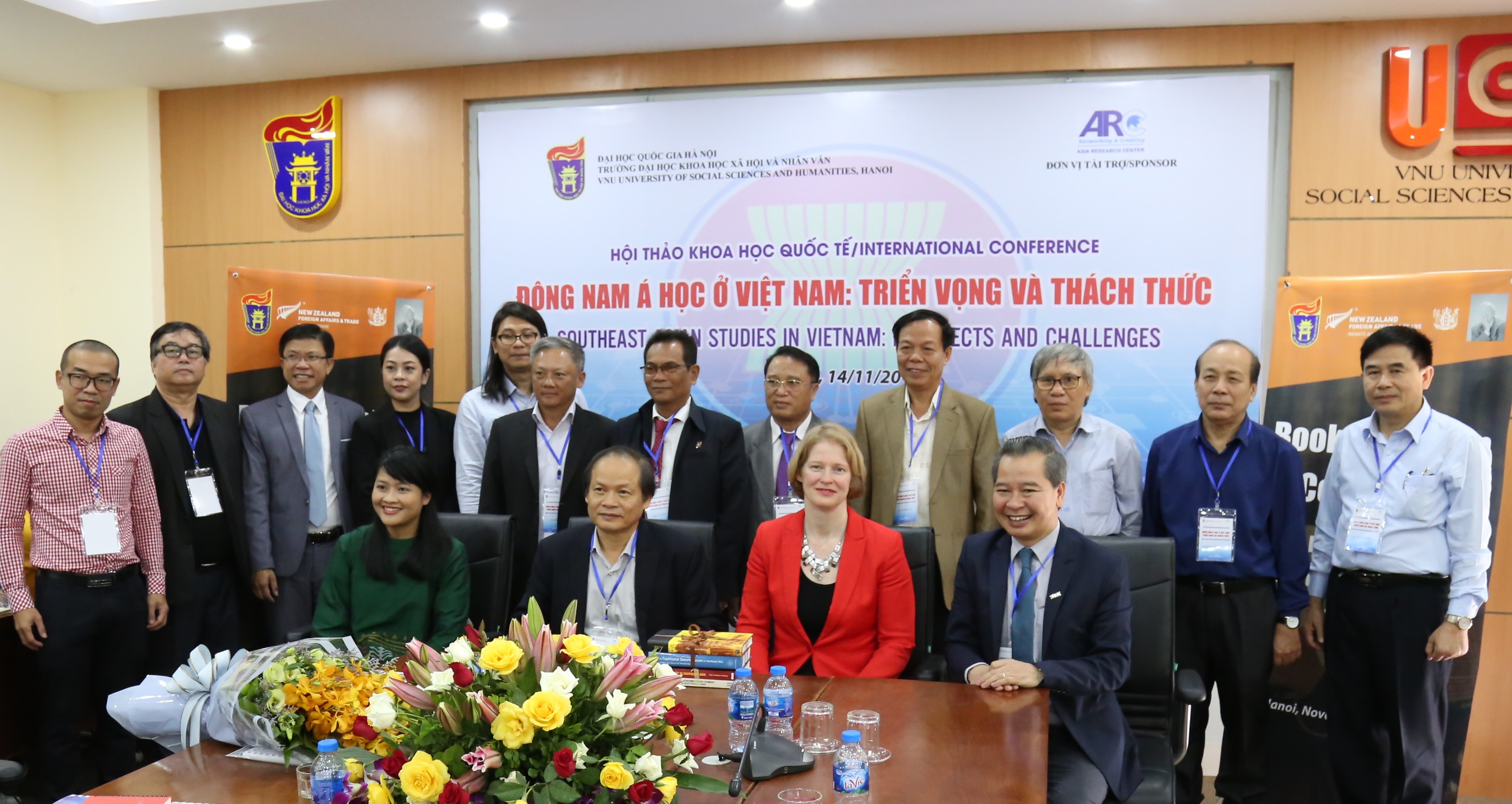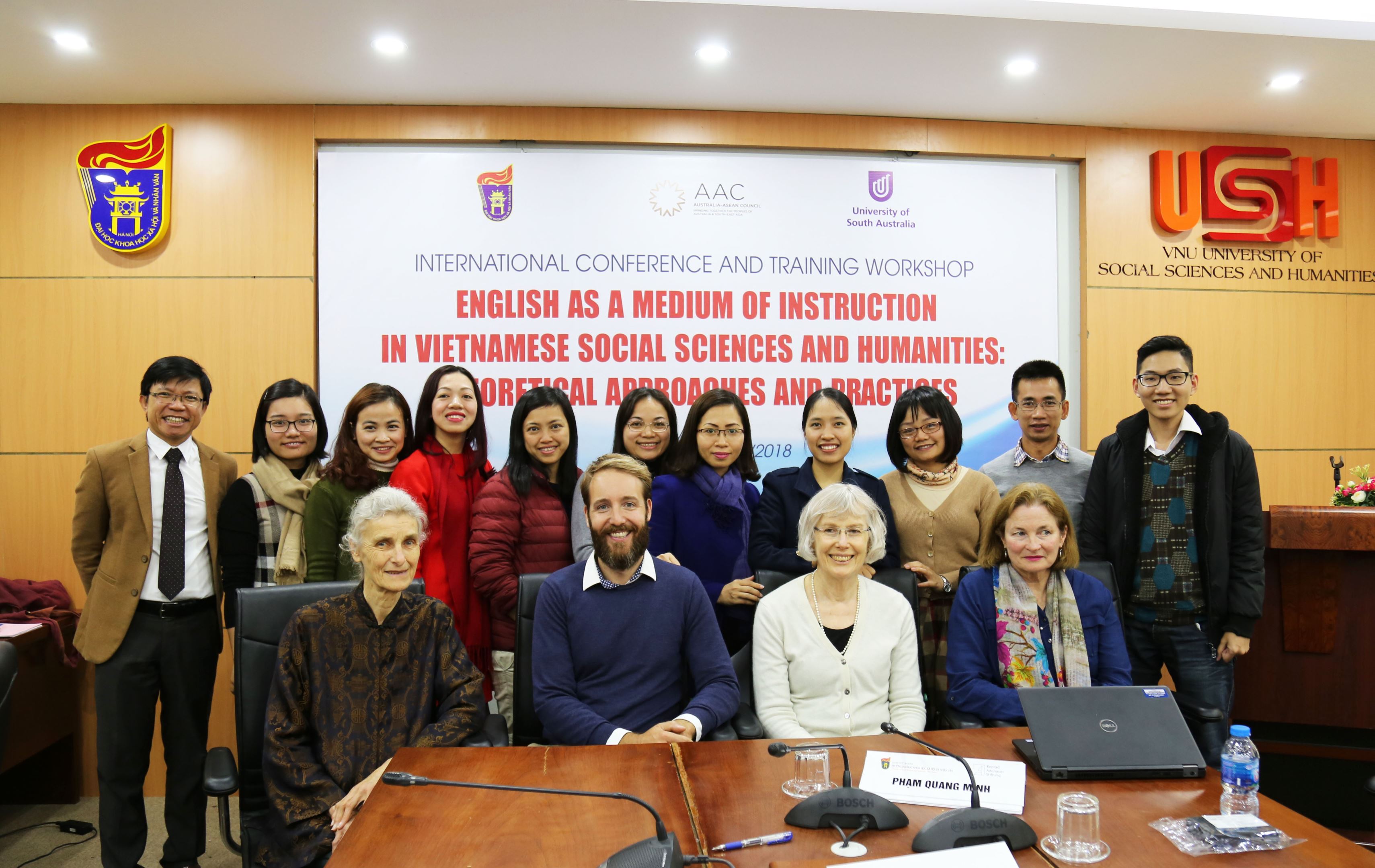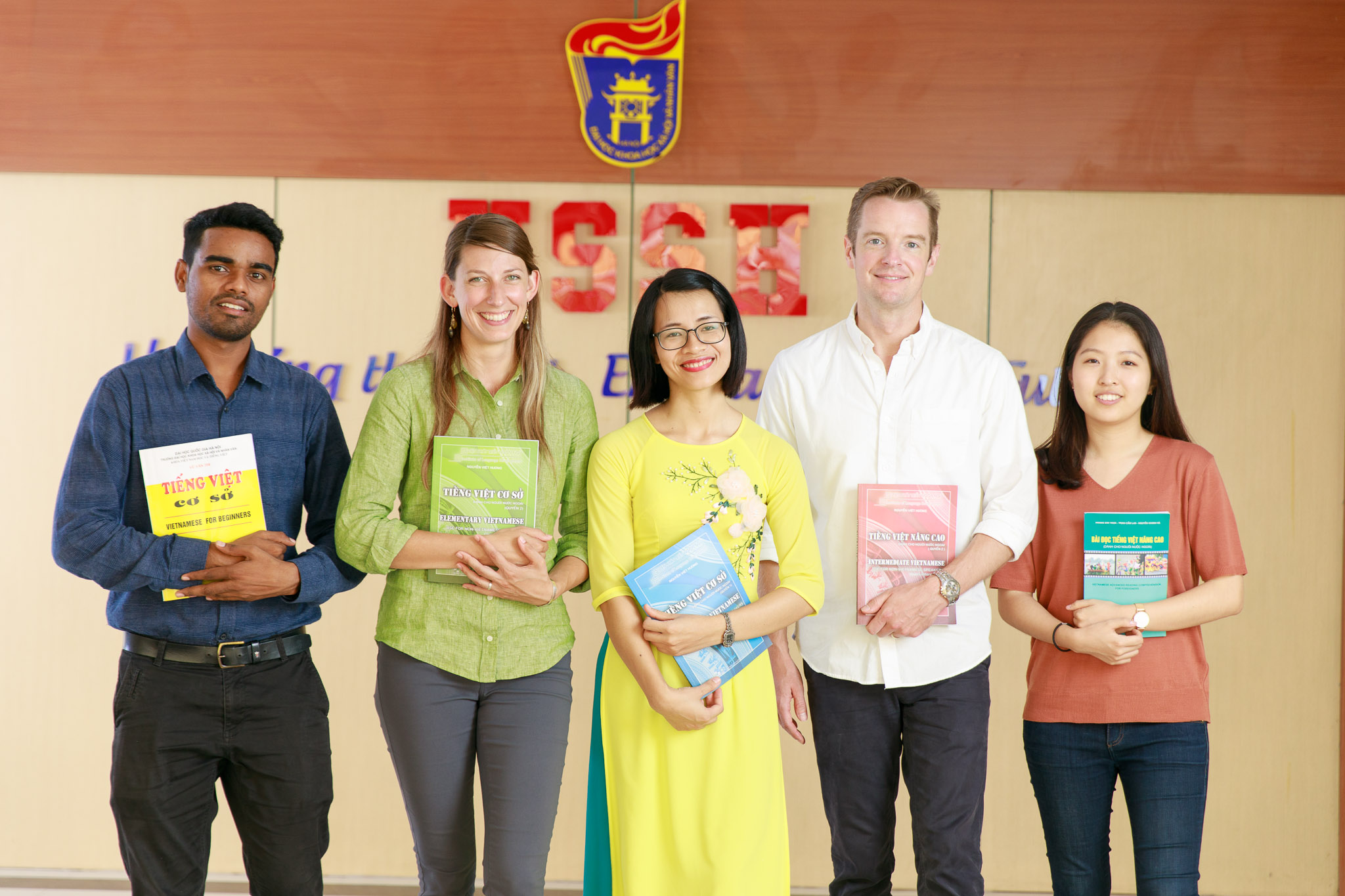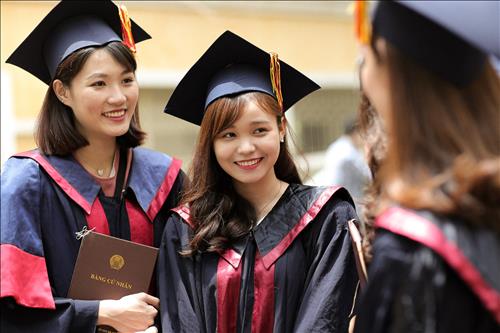

Vice Principal Hoang Anh Tuan
VUCA world and industrial revolution 4.0…
- In some recent forums, Associate Professor often mentioned the need to innovate human resource training to adapt to a very "new" and "different" labor market in the near future, in which Associate Professor often mentioned concepts such as the VUCA World and Industrial Revolution 4.0 (IR 4.0)... Could Associate Professor explain more?
“The "VUCA world" is a concept that has been around for decades, formed by the first four letters of the termsVolatility (volatility),Uindefinite,Complexity (complexity),AAmbiguity, used by the US military during the Cold War, is often used by economists to refer to unstable financial markets... Recently, many international higher education experts have used the term VUCA to talk about the unpredictable changes in the labor market in the context of the Fourth Industrial Revolution (Industrial Revolution 4.0) which is having a strong impact on the future of careers.
![]()
Prof. Dr. Pham Quang Minh (Rector of the University of Social Sciences and Humanities) welcomed Ms. Cáit Moran - Ambassador of the Republic of Ireland to visit the University of Social Sciences and Humanities on the occasion of the University welcoming the first batch of students of the International Development Studies major under the Faculty of International Studies. This is a new major in Vietnam that the University is a pioneer in training with the help of the Embassy of Ireland (September 17, 2018). Photo: Thanh Ha
The World Economic Forum (WEF)'s 2016 report, "The Future of Jobs," estimated that: "For the generation of students starting primary school today, 65% will be working in jobs that do not yet exist." Also according to WEF's forecast, in the period 2015-2020, on average, for every 6 million jobs lost, only about 2 million new jobs will be created, the public administration sector will decrease sharply while new jobs will mainly be in the high-tech sector and management sectors.[1]In fact, the risk of labor market fluctuations under the impact of modern technology has been warned for decades. For example, exactly 20 years ago (1999), the US Department of Labor gave an estimate of 65% as reported by WEF. More recently, in 2017, Dell Technologies Corporation gave an even higher estimate: in the next 10 years, about 85% of human resources will do jobs that do not yet exist.

Ms. Wendy Matthews (Ambassador Extraordinary and Plenipotentiary of New Zealand to Vietnam) and representatives of embassies of Singapore, Indonesia, Cambodia, Thailand... attended the workshop "Southeast Asian Studies in Vietnam: Prospects and Challenges" (November 14, 2018). In 2018, the Southeast Asian Studies major was first enrolled in undergraduate programs at the University of Social Sciences and Humanities, opening up new prospects for this major. Photo: Cong Minh
- So, many challenges and risks have been and are being posed, requiring not only students but also lecturers and training institutions to innovate training activities?
Innovation is a must for any organization or society. Without innovation, there will be no development. University education is no exception, it needs to keep up with the current stormy development trend of technology and the labor market. I have mentioned some of the challenges facing universities today.
Firstly, the increasing demands of employers on qualities and skills in addition to professional qualifications of students create pressure for innovation on schools in balancing knowledge teaching with skills training and developing positive thinking for students. The fluctuations in future careers make the training activities of universities face the risk of falling behind the new human resource needs.

Launching the Danko Scholarship Fund for students of the University of Social Sciences and Humanities - representing the close and flexible connection between training institutions - businesses and schools - alumni (October 3, 2018)
Second, students' legitimate demands for a learning environment do not stop at knowledge but also include accompanying services: facilities, learning equipment, self-study space, canteen, internships (especially abroad), professional development clubs, cultural, sports and artistic activities, school-enterprise connections, startup support... There is a very existential example: the philosophy of "studying painfully to live happily" of 20th-century students is now considered "deviant" because 10x generation students consider studying at school "not only as preparation for life, but also as life itself"! Therefore, universities around the world today are concerned with investing in improving facilities to attract students, encourage students to study and live at school, thereby sticking with the school and not dropping out...
Third is the risk of losing market share in enrollment and training in traditional training sectors, especially basic science sectors which are increasingly less attractive to learners. In recent years, the total number of Vietnamese youth studying at domestic universities has decreased steadily, while the number of studying abroad has increased sharply, not to mention the trend of "on-site study abroad" through distance or online training programs of foreign universities and international joint programs with domestic universities... According to the annual Open Doors report of the Institute of International Education (IIE), the number of Vietnamese students studying in the United States has increased continuously over the past 17 years, reaching 24,325 students in 2018, meaning that more than 800 million USD flowed from Vietnam to the United States last year.[1]not to mention the large number of Vietnamese students studying abroad in other international education systems.

The University of Social Sciences and Humanities hosted a training course on designing courses in English (EMI) for university lecturers in Hanoi with the support of experts from the University of South Australia. Photo: Thanh Ha
Fourth, the strong shift in the employment structure of students after graduation to the non-public sector (private, international, non-governmental, start-up...) requires adjusting the structure of training programs, teaching time in class, investing in developing a comprehensive skill system, training proactive attitudes and positive learning mindset so that students can adapt to different working environments in the future. The World Education Summit (WISE) held in New York in September 2018 emphasized the importance of cognitive education and "lifelong learning" thinking because in the future, knowledge learned at university will become outdated very quickly. Therefore, only with a view of regular learning and a lifelong learning mindset can workers adapt to the changes of future careers.
Fifth, the slow innovation of university management thinking is a reality that has been warned by education experts, especially in the public school sector. This risk leads to missing the trend of world university training, falling behind in awareness, not being able to predict human resource market trends, not even understanding the changes in the needs of the learners themselves, leading to a situation where university management cannot keep up with the needs of the learners.

Students of the University of Social Sciences and Humanities at the opening ceremony of the 2018-2019 school year. The training products of the University of Social Sciences and Humanities aim at the following goals: solid expertise, good skills and integrated thinking. Photo: Trung Hieu
The Ministry's "industry" - the teacher's "profession" - the student's "career"...
- Thus, it can be seen that one of the existing risks is the "old" and "static" nature of the current training structure in relation to the "new" and "dynamic" nature of future careers, Associate Professor?
The structure of the training sector always tends to change more slowly than the rapid changes of occupations and the labor market, especially in the context of the current fourth industrial revolution. However, it must be said objectively that the structure of the state's training sector is not completely "static" or "closed" but is always recommended by the training institutions themselves for the state to supplement. Therefore, universities must both see the benefits and recognize the responsibility to build new training sectors based on future human resource needs, organize pilot training, and then recommend the Ministry of Education and Training to add to the training sector code. For example, more than two decades ago, the University of Social Sciences and Humanities pioneered the opening and pilot training of Tourism Studies, which has now been included in the official list of training sector codes of the state.

Vietnamese Studies student, University of Social Sciences and Humanities. This is an interdisciplinary major, increasingly attracting the attention of Vietnamese and foreign students. Photo: Ngoc Tung
- But besides the story about training sectors, we also have to talk about the system of occupational titles in society. How should these two aspects be noted in the context of training new human resources, Associate Professor?
Previously, the story of “industry” and “profession” was mentioned in an organic, very close relationship. According to traditional employment logic, students graduating from a training major often tend to work in that professional field, related to the code and professional title standards issued by the state. However, in recent years, the boundary between “industry and profession” has become increasingly blurred; the trend of studying this major and working in another profession is becoming more and more popular. Ultimately, this is completely normal in every society if we look at the labor and human resource trends in developed countries and the developments of domestic policies, especially the policy of streamlining the payroll and restructuring the team of cadres, civil servants and public employees in the spirit of Resolution 18 and Resolution 19 of the 6th Central Conference, Session XII.

Foreign students studying for bachelor's and master's degrees in Vietnamese studies at the University of Social Sciences and Humanities have created a multicultural academic environment here. Photo: Thanh Long
It is important that training institutions quickly and fully recognize the above reality in order to make appropriate adjustments to the training structure. In addition to opening new training majors to meet the human resource needs of society 4.0, old training majors that no longer have much social demand can reduce the scale of training or consider the possibility of integrating with some nearby majors to form new majors. When society no longer has a need for human resources, the industry will hardly exist, except for basic science majors that any society needs, then the state will invest in maintaining them. In the world, eliminating a training program that no longer has social demand is a very normal thing, although it is inevitable to feel nostalgia and regret.

At the University of Social Sciences and Humanities, students are equipped with fundamental knowledge of basic sciences to support their studies and research in their majors; in addition to critical thinking and the ability to adapt to the labor market. Every year, thousands of students are able to do internships and practical training abroad as an important part of the school's curriculum. Photo: Ngoc Tung
Looking at the practical movement of the labor market in recent years and predicting the trend of labor use in the next decade, the thing to pay attention to now is how to harmonize the three main factors: the "industry" of the Ministry - the "profession" of the Teacher - the "career" of the student. The State has been quite open about the training code, the labor market has been quite public about the movement trend for students to start a career after graduation, so the lecturers and universities themselves need to be proactive and determined to act as a bridge between the two ends of the bridge: the learner and the labor market. In other words, teachers must always innovate and be creative to both maintain their passion and the chosen profession, and ensure the formation of new training majors to meet the career orientation of students in the digital human resources era.
Advantages of Hanoi National University: Multidisciplinary/Basic Science foundation - Interdisciplinary/Transdisciplinary trend - Innovative/Creative thinking
- So, according to Associate Professor, what is the main trend of the training system in the future?
Many different views have been presented. Personally, I believe that interdisciplinary and cross-industry will be the fundamental trend in the context of a university ecosystem that operates according to the motto of connection and innovation - creativity.
For a long time, Vietnamese universities have followed a narrow and specialized orientation. Specialized training has certain advantages, but in the digital human resource era with artificial intelligence and automatic internet of things, interdisciplinary/cross-disciplinary training has more prominent advantages. Education experts have recently talked a lot about the new human resource training model "T-shaped People" based on the combination of philosophyknowing something about everythingwith the viewknowing everything about something(of the previous I-shaped People model). New work practices require future workers to know more broadly and converge more cognitive and problem-solving skills than just specialized and narrow knowledge, which can be solved by artificial intelligence (AI). For example, currently in many countries, single jobs such as Hotel receptionist, Tour guide, Sales staff... have been completely replaced by robots; in the near future, more complex jobs such as Interpreter, Legal consultant, Teacher... can also be performed by machines with artificial intelligence... Therefore, human resources for the 4.0 labor market need more than single specialized knowledge; learners need to be equipped with multidisciplinary, cross-disciplinary knowledge, positive thinking, and synthetic skills...

The Rumbo cheerleading team of Humanities students shows off their healthy and dynamic beauty.
In particular, in addition to scientific and technological knowledge (STEM), people have begun to talk about the crucial role of philosophy, ethics, and knowledge of humanities and arts... At the recent International Education Summit, President of the Institute of International Education (IIE) Allan Goodman said that technologies that have the potential to transform society on a large scale will be the ones that need the strongest ethical foundation, that judgments based on ethics and morality can be revolutionary in the 4.0 era.[1]
- What advantages does the University of Social Sciences and Humanities have if it implements interdisciplinary/transdisciplinary training and the spirit of innovative and creative universities, Associate Professor?
The University of Social Sciences and Humanities in particular, and Vietnam National University, Hanoi in general, has a great advantage in adapting to human resource training in the digital age because it is a multidisciplinary, multi-field university center, harmonizing basic science and applied science sectors... leading in the country. With the social sciences and humanities sector, in addition to maintaining basic science sectors - which are essential for any nation - the University is developing "hybrid sectors" on the basis of linking existing sectors. For example, in addition to the International Studies and Anthropology sectors, the University is developing the "International Development Studies" (IDS) sector; in addition to the three existing sectors of Sociology, Social Work, and Psychology, the University is researching and developing a hybrid sector to serve the practice of Aging and Social Development...

Psychotherapy requires interdisciplinary knowledge.
In addition, a number of hybrid majors and majors in the field of interdisciplinary development in Hanoi National University are also being developed, for example: between the Economic field and the Social Sciences and Humanities field, hybrid majors/majors are being formed such as Management Economics, Tourism Economics, Journalism and Communication Economics; Arts Business Administration; or between the Economic field and the Natural Sciences, Technology fields... Clearly, the multidisciplinary and basic science characteristics are a great advantage for Hanoi National University and its member units in developing interdisciplinary/transdisciplinary training majors, anticipating the human resource trend of the 4.0 era.
- Sincerely thank you for sharing, Associate Professor!
Author:Thanh Ha
Newer news
Older news